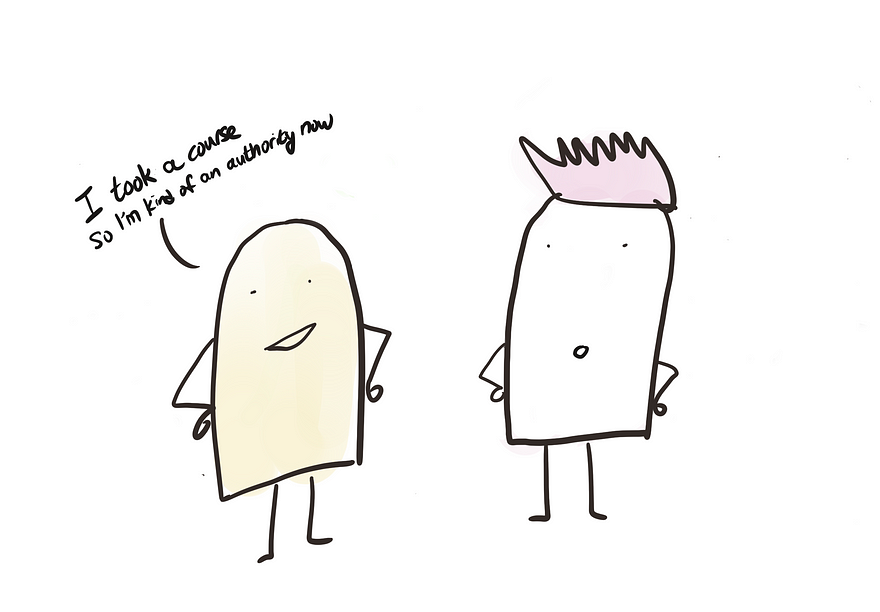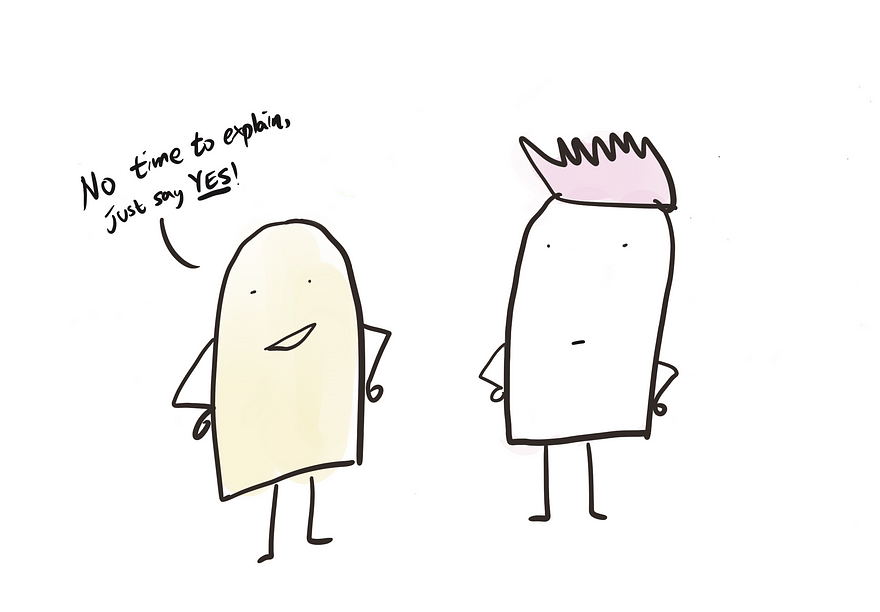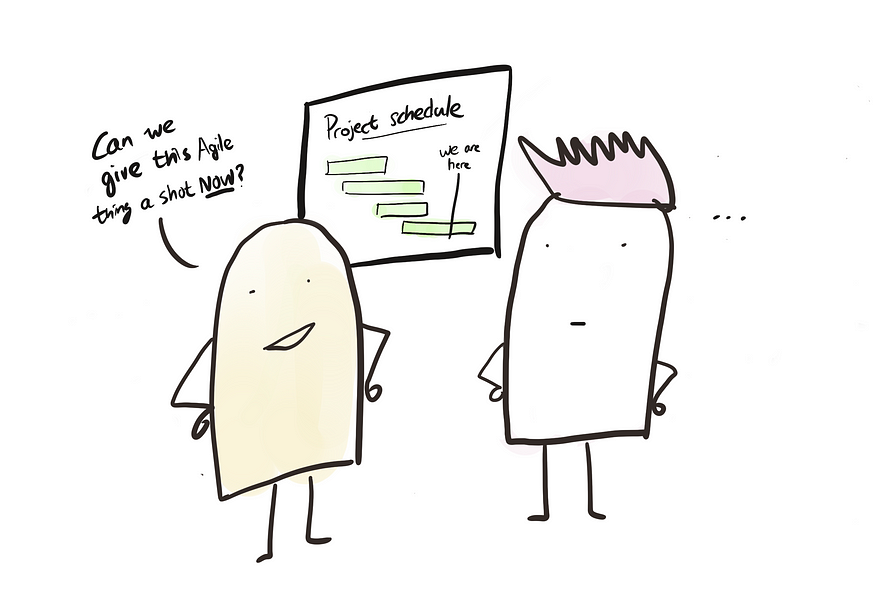If you were like me five years ago, you didn’t know how to influence stakeholders to make changes. You might have tried to convince stakeholders to do UX the “right way” according to what your bootcamp taught you or what you read online. They listened (not really, they just nodded while secretly swiping their phone), but nothing happened.
I know how you feel, I sucked at it too when I first start out. Throughout the years, I realized there is a process on how great designers have done it and I am eager to show you how!
There are two parts of this article. In Part I of this article, we will first understand why you fail to influence stakeholders, then in Part II (coming soon…), I will show you the step-by-step process on how to influence stakeholders without authorities.
Let’s start with Part I — why you fail to influence stakeholders.
Why you fail to influence stakeholders
There are three common pitfalls why designers failed to influence stakeholders:
- Wrong mindset —You think your way is the only way
- Wrong approach —You expected to sell it in one go
- Wrong timing — You propose a new processes in the middle of a project
Let’s break it down.
1. Wrong mindset

You know that boss. They went to a conference, they read it on Harvard Business Review or — god forbid — they went to a leadership offsite where you were specifically NOT invited, but they had to tell you anyway what a wonderful time they had in the company’s email. Now they are back with a new “strategic” direction and they want everyone to do things differently. This might be Agile or SAFe, whatever new framework was popular at that tim
Nobody likes that boss.
I have bad news, you are that boss when you did a UX bootcamp and want to change how everyone do things your way. The only difference is you are not a boss yet.
It’s okay! I was that person too when I first started in UX finishing a bootcamp, I wanted everyone to do projects the “right way”. You know, the “Start with the research”, “double diamond” method they taught us in the bootcamp.
Put yourself in your stakeholder’s shoes for a second:
Oh you took a course in UX? Well, I did a course in PMP, SCRUM, AGILE, SAFe, PRINCE2…etc with “Indutry recognized” certificate as well. Why is your method better?
This is actually a really good question you need to be able to answer if you want to influence others. Is the Design thinking way really better in this company? Maybe, maybe not. In most cases, there is already an established ways of working before a designer joins the company.
You will have to find out why the current process existed in the first place and what are their Pros and Cons. Challenging the status quo without fully understanding the context undermines stakeholder’s trust in you and lower your chance of being listened to.
Mindset shift
❌ Instead of — I know THE right way and everyone should listen to me.
✅ Reframe — I don’t know more than everyone, but I will spend time to understand why we do things the way we do here and propose how we can improve it later.
2. Wrong approach

Another common mistake I see from designers is to think one or two conversations is enough to convince people to make changes, and are discouraged when nothing happens. This is rarely how change works in real life.
Influencing is about driving change, and change is a process.
Expect any big changes to take time. It takes time to involve different stakeholders with multiple conversations and it takes time for you to form a coherent argument and find allies on your side. Preparation is key, so prepare to play the long game.
Mindset shift
❌ Instead of — I expect to influence others in one go.
✅ Reframe — I acknowledged change is a process. I play the long game to form a coherent argument and find allies on my side.
3. Wrong timing

Finally, designers often fail to influence stakeholders because they picked the wrong time to bring up a suggestion. For example, the project has already kicked off and the Product Manager has reached out to a designer for a solution — say they want a search bar and development start in 2 weeks.
I can imagine a lot of designers already started rolling their eyes in this scenario. Some might be frustrated and decide to tell their PM they need more time to do research right away. While it is obvious the company’s design maturity is low and the process is broken, making changes in the middle of a project is counterproductive and only breeds anxieties.
Let’s pause for a second to think about what is going through your counterpart’s head when they hear: “we should do more research now”.
“Why do we have to do research? How long would that take? Why can’t we launch first and gather user’s feedback later? Do I have to go back to all the stakeholders and have those alignment conversations again? Do I need a new estimation from the engineers? Will the project be delayed? Will that impact my KPI/OKR? My bonus? My career?”
When you make an argument at the wrong time, stakeholders often become hostile because they think you would hurt their interest. Instead of working towards a common goal that benefits everyone as a team, you become a threat to them.
So what should we do instead if you find yourself in the midst of a crappy process? Accept it. There is a right time for everything. Realistically, you can’t change much for the current project you are in, but you can work towards influencing stakeholders to make changes on the next one.
Remember, change is a process. Use this round as an opportunity to document the consequences of following the existing process and collect evidence to prove that it is broken. Did the solution work? Did the team create user value? Was the objective achieved? Was the design high-quality? Why should they care if it was not of high quality?
Don’t just go to your boss and say the current process is broken without any concrete evidence to back it up, you want to present it as a fact, not your personal opinion.
These are talking points you can bring up when you pitch your proposed solution later, so don’t be discouraged when things don’t go the way you want yet. Be patient and plan for the long game!
Mindset shift
❌ Instead of — I am frustrated that I can’t change how things work now.
✅ Reframe — I understand timing is important, I will take time to collect evidence on why the current process doesn’t work and use it to my advantage later.
Recap
Influence is hard, but it is also a skill that can be learned. Like any skills, the most important first step is to set yourself up with the positive frame of mind. Here is a quick recap on the mindset shift you can start implementing today:
✅ I don’t know more than everyone, but I will spend time to understand why we do things the way we do here and propose how we can improve it later.
✅ I acknowledge change is a process. I play the long game to form a coherent argument and find allies on my side.
✅ I understand timing is important, I will take time to collect evidence on why the current process doesn’t work and use it to my advantage later.
Now that we have our mindset straight, we will dive into Part II — How to influence stakeholders without authorities which will come out…really soon.
The quickest way to get notified when part II comes out is to sign up to my news letter!